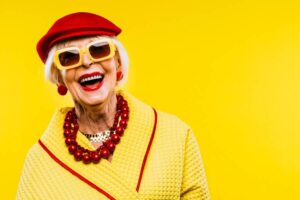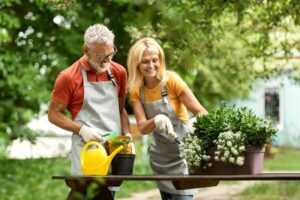Be Prepared: The Ultimate Hurricane Survival Checklist. Here Are 21 Things You Can’t Afford to Ignore!
In this article, you’ll find X things you can’t afford to ignore in an emergency. As we know, hurricane season is critical for millions of Americans. Every year, those living in coastal regions face natural disasters and fight for their lives. Unfortunately, no matter how prepared people believe they are, there is a lot of damage and even loss of lives yearly.
Being prepared for hurricanes can make a huge difference, transforming a crisis into a manageable one. Even though it’s almost impossible to be totally prepared against a natural phenomenon, we will explore together the essential items and preparations needed to stay safe. These powerful storms are not playing and the Milton hurricane just made history with its power. So, believe it or not, being prepared is a MUST.
Hurricanes are tropical storms, characterized by strong winds and heavy rain. Experts have categorized hurricanes into 5 different stages. For example, hurricanes raging from Category 1 mean minimal damage, while those categorized as Category 5 mean catastrophic damage. Pay attention to weather updates in your area and regularly check reliable sources that can provide significant information about the storm’s trajectory, especially if you are living in one of the affected areas.

What Americans MUST HAVE in case of a strong hurricane:
1. Water
The water is probably the most critical resource during a hurricane. A gallon per day is the recommended portion for each person. Store extra water for cooking and hygiene in sturdy, BPA-free containers. You should also purchase water purification tools, such as tablets or filters, because you may need to get water from uncertain supplies.
2. Non-perishable food
Pay attention to high-energy foods that don’t require cooking. Canned beans, vegetables, fruits, and nut kinds of butter are among the most common options. Choose whatever your family likes to have because you don’t know for how long you’ll depend on those resources. Enjoying them will make you feel a little bit better.
3. Manual car opener
Even though in the last year electric cars became extremely popular all over the world, in case of a power outage, they won’t work! You need to have a manual car opener in your emergency kit. Choose a medium size and a model that is easy to use. Our advice would be to practice using it before a natural disaster crisis.
4. First aid kit
First aid kits can be found almost everywhere, but we truly recommend this one, from Amazon. Don’t forget what a well-stocked first aid kit should include before purchasing anything. The essential items are band-aids, antiseptic wipes, gauze pads, medical tape, tweezers, and a digital thermometer. Include in your emergency kit your personal medication such as pain relievers, any prescription drugs you may need, or allergy meds.

5. Multi-tool or Swiss army knife
A multi-tool as its name says, can be useful in a lot of situations, from opening packages to making serious repairs. We recommend you look for one that includes pliers, a knife, a screwdriver, and scissors. The most important thing is to be lightweight and compact enough to be carried easily. In unexpected situations, these little tools can be real lifesavers.
6. Flashinglghts with extra batteries
You should definitely invest in high-quality batteries and flashlights. Also, consider headlamps, they can be really useful, especially when you are trying to prepare something to eat or when you manage emergencies. Do your batteries stock long before any kind of unexpected situation, but check them periodically to ensure they work properly.
7. Portable phone charger
You probably already have a portable phone charger, but our advice would be to invest in a strong one. In case of emergencies, high-capacity chargers can be life-saving. You can also consider solar-powered options as well, they can be easily used if power is out for an extended period.
8. Duct tape
The ultimate repair tool is what duct tape is called. It definitely deserves its title, considering how it can secure items, patch leaks, or reinforce weak spots in your home. An even better option would be a weather-resistant tape, specially designed for outdoor conditions.
9. Battery-powered or hand-crack radio
It’s essential to stay updated on the weather forecasts and emergency alerts. Choose a model that also has NOAA weather band capabilities. This way, you’ll be able to receive vital alerts.
10. Emergency contact list
Make a list of all your emergency contacts, including friends and family members. You can also include local hospitals or shelters, and numbers from your insurance provider. Make more copies of it and make sure every member of your family has one, in case of a big natural disaster. You’ll need to stay connected and find each other, and most likely the phone will not work, so going back to classic survival tips is essential in order to stay alive.
11. Tarps and heavy plastic sheeting
They can be used to cover windows or doors and protect your home from rain and wind. Temporary shelters can be created using heavy plastic sheeting. Make sure you have enough duct tape and rope to secure everything effectively.
12. Sandbags
Sandbags are GREAT for redirecting water. Position them strategically to protect your doors and windows. Acquire them in advance from local governments that offer them before storms.
13. Important documents
Make copies of all your important documents. Keep them physically but also save them in a secure cloud storage service and they’ll be easily accessed from anywhere.
14. Cash
Cash is invaluable in case of natural disasters because ATMs are most likely to not work. Store small bills to make purchases easier. Also, consider storing some coins, since they are more resistant.
15. Clothing items
Prepare clothes for extreme weather conditions. Waterproof items are a MUST! Look for quick-drying fabrics that provide comfort if you get wet.
16. Blankets or sleeping bags
After power outages, nights are most likely to be cold. So, having a good supply of blankets and sleeping bags to keep you warm is essential. Thermal or emergency blankets are the best choices because they are lightweight and also very easy to pack.
17. Pet supplies
Don’t forget about your little friends! Pack enough water, medication, and food for them. You should have everything you normally need for them, for at least 7 days. A pet carrier for transport and comfort items like toys or blankets can reduce stress and protect your pets during evacuation.

18. Evacuation routes
Study local evacuation routes and have a plan in place. Make sure you check all the alternatives in case primary routes become blocked. Share all this information with your family members, so everyone will know where to go if an evacuation is necessary.
19. Clean up supplies
After a hurricane, debris is a major issue. Make sure to pack heavy-duty gloves, trash bags, and masks. Also, sturdy tools like shovels and rakes should be considered for clearing debris and cleaning properly.
20. Home repair tools
You need a basic toolkit with hammers, screws, wrenches, and screwdrivers. Practice a little bit and familiarize yourself with simple repair techniques, such as how to patch holes in your roof or board up windows temporarily.
21. Emergency preparedness apps
Download apps that can help you stay updated and provide real-time storm tracking, safety tips, and emergency alerts.
You should also read: Ready to Retire in Beautiful Florida? Read These 7 Things First!




















2 Responses
hdtuwk
Thank you for this exceptionally valuable presentation… and yes …most people are very unprepared !
Even beyond hurricane vulnerable areas , a survivable assembly of supplies is a must for regional, disasters of other types is essential !